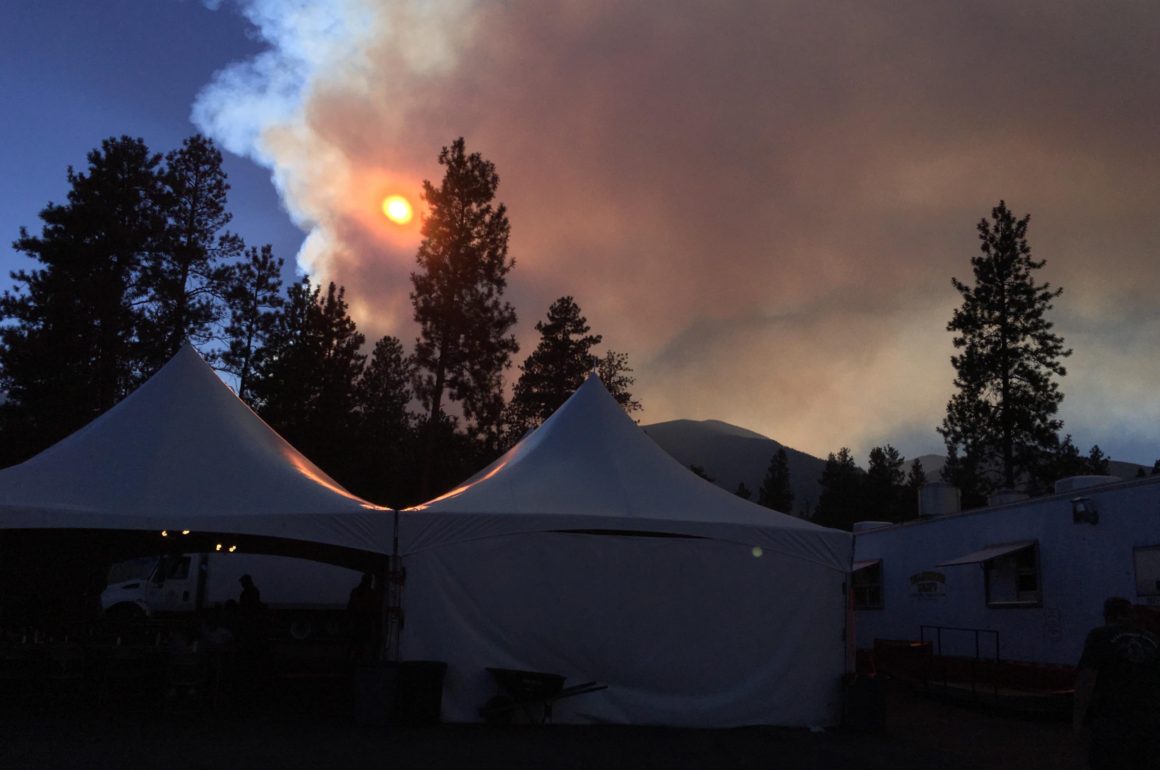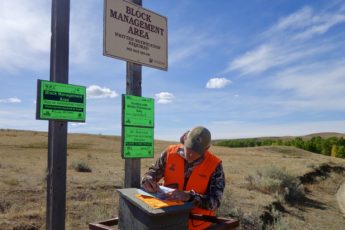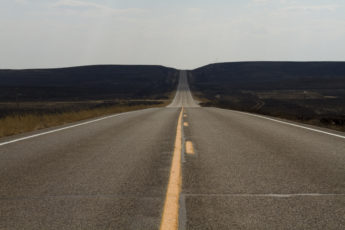
Inside the Lolo Peak Fire Incident Command Post
Right now, much of Montana is crawling out of the ashes from a brutal fire season. The mountains are blanketed by sweet, beautiful snow. The dust is starting to settle. And folks are finally able to sit back and exhale a big sigh of relief as they try their damndest to account for the last few weeks of their lives
Of course, we’re not totally in the clear yet. There are still some active fires and people will spend years recovering from lost homes, damaged property, and scorched fields.
But we’re starting to take stock of what went into fighting these fires this year. There are the obvious things: money, boots on the ground, equipment, water, and more money. Then there are all the behind-the-scenes logistics and planning that allow our firefighters to focus on what they do best: protecting our communities and public lands from wildfires.
An aerial view of the Lolo Peak Fire.
Let’s take the Lolo Peak Fire, for example. This fire started from a lighting strike on Saturday, July 15, at about 2:34 p.m. As of September 20, it has burned 53,902 acres, and is 87 percent contained. When the fire was at its worst, there were well over 400 firefighters combating the blazes and the National Guard was called in to assist them. Hundreds of folks had to evacuate their homes, two houses and many smaller structures were lost to the blaze, and one brave hot shot was killed on duty.
The logistics start from Day One. There were multiple lightning strikes on July 15. That means that right from the get-go, decisions were being made about which blazes to contain and which to let burn. As the Lolo Peak Fire grew and as other fires across the West continued to pop up, then came the staffing issues. Crews and fire personnel are legally limited in the number of days that they can work in a row before they need some time off. So someone has to be shifting crews to the different fires across the West to make sure no one is overbooked, no fire is left completely understaffed, and each crew is getting the recovery time that they need and deserve.
In this particular case, there were over 400 people fighting a raging fire outside of Florence — a town with one stoplight and a population of 765 people. Where are all these firefighters going to sleep? The Days Inn at Lolo? And what are they going to eat? Can Glenn’s Cafe (which has delicious pie, by the way) really feed all these people every day?
That’s why there’s the Incident Command Post. We followed signs from Highway 93 to the ICP. After turning down a dirt road and passing a few houses with posted signs reminding us to drive slowly, the landscape opened up. We passed a large field with trucks and cars on the left and the National Guard post on the right. Continuing to the third entrance, as instructed, we checked in with security and headed to their “Main Street.”
“It’s always impressive if you’ve never been inside a camp before,” said Dan McKeague, the fire management officer handling this fire’s public outreach. He wasn’t kidding. This place was impressive.
From the looks of it, we had stumbled into an entire community set up in the middle of a farmer’s field. I’d later find out that this wasn’t far from the truth. They were temporarily leasing this field. Nothing here was permanent.
“Main Street”
We pulled up to their “Main Street” — two lines of contractor trailers, each housing different departments like mapping, finance, medical, and general information. I was told that I could find their “Main Street” near the tent with the American flag flying over it. This was true, but not totally specific. There were a lot of tents with the American flag flying over them.
Later, in an email exchange with Dan, he’d explain that one of the toughest logistical challenges for a “Type 1” incident is getting electricity.
“When the command post is established in an undeveloped field such as on the Lolo Peak Fire, electrical lines have to be run to facilities in order to support all of the command sections and their needs,” he wrote. They need computers, printers, heating and cooling units, refrigeration units, lighting, and all sorts of things.
Upon arrival, we were greeted by Angela, who accepted the donations we had brought from local businesses and community members to give to the firefighters. She gave us a quick tour through the grounds of the ICP. There were tents stretching far across the field to the west. Beyond them lay the town of Florence. And beyond Florence, the massive plumes of smoke rose up from the fire. It was an eerie reminder of why this little community had sprung up in the middle of this field.
Looking west. Smoke from the Lolo Peak Fire can be seen beyond the firefighters’ tents.
In the center of the camp was a makeshift stage where the Incident Commander would give the briefing to the crews each day. There were maps, charts, and all the latest updates about weather conditions. The camp was mostly desolate; everyone was out on the fire. And as we stood underneath the two American flags flanking the stage, it was clear to me that these are the people that make America great.
On the southwest side of camp was the maintenance area. Everyday, hoses had to be uncoiled and inspected. Any broken gear had to be fixed up, checked out, and made ready to go for the next day. While firefighters get the occasional day off, the gear does not. The ICP is a 24/7 production.
On the north side of camp was the mess hall, the food contractors, and the portable showers. As Dan explained, these services are often contracted out by large companies from throughout the West that specialize in this kind of thing. This makes sense: It’s not like you can just gather up all the food trucks in Missoula to come feed 400 hungry firefighters their 6,000 calorie diet.
That’s right. They’re fed 6,000 calories a day. It takes a lot of fuel to fight fires.
And of course, since they’re eating a 6,000-calorie-a-day diet and temporarily leasing someone else’s land, there’s another small logistical issue to consider: toilets.
“More than 200 can be on an incident like this and they have to be moved regularly, as coordination points for the fire change,” Dan wrote.
These logistics are just the tip of one massive iceberg. After all, there’s still the big question: how the hell are they going to fight this fire? There is a lot of science and strategy involved in this (and probably a fair bit of luck, too). They’ve got to know where to send people, how many people to send, where they should put firelines, if they should backburn an area, which way the wind is going to blow, and whether they should evacuate people from their homes. So many groups from around the country — state, federal, and private — are working together in a unified command to figure this out and keep everyone safe.
This is not an easy job.
Fighting fires is a high-risk, high-stakes scenario. People’s lives and people’s properties are on the line. But everyone at the Lolo Peak Incident Command Post seemed to be doing the best they possibly could with the situation at hand and the resources they have.
Dan later reiterated this sentiment in an email: “We’ve had amazing support throughout this incident. Community members and people from around the country have continued to demonstrate their support for firefighters and local residents.”
Everyone’s working together, under those flying American flags in front of a backdrop of billowing smoke, to protect the land they love and the communities that rely on these lands.
“Impressive” doesn’t even begin to cover it.
-Amanda Garant



